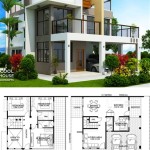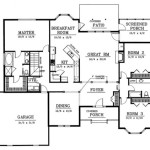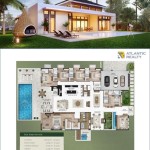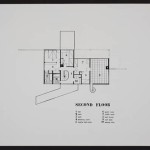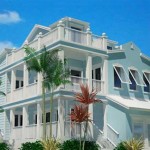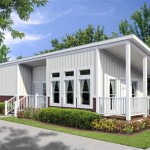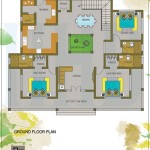Small Tree House Floor Plans: Maximizing Space and Functionality
The allure of a tree house extends beyond childhood nostalgia, offering a unique and often secluded retreat for adults and children alike. While tree houses can range in size and complexity, small designs are often preferred due to cost considerations, environmental impact, and ease of construction. The key to a successful small tree house lies in a well-thought-out floor plan that maximizes the available space while maintaining structural integrity and functionality. Careful planning is paramount to ensuring the final structure is safe, comfortable, and meets the intended purpose.
Designing a small tree house floor plan requires a balance between desired features and the limitations imposed by the supporting tree(s). Unlike traditional ground-based structures, tree houses need to accommodate the natural movement and growth of the trees. This necessitates a flexible design approach and careful consideration of the tree's health. The floor plan serves as the blueprint for realizing this vision, defining the dimensions, layout, and integration of essential elements such as entry points, windows, and any built-in furniture.
Understanding Structural Considerations
The foundation of any successful tree house floor plan is a solid understanding of the structural requirements. This begins with a thorough assessment of the chosen tree(s). The species, health, and size of the tree(s) will dictate the allowable load and the most appropriate attachment methods. Consulting with an arborist is highly recommended to ensure the tree is healthy enough to support the weight of the structure and its occupants, and to advise on tree-friendly attachment techniques.
Several attachment methods are commonly employed, each with its own advantages and disadvantages. These include:
- Direct Attachment: Involves bolting the tree house directly to the tree using specialized tree house attachment bolts (TABs). These bolts are designed to allow for tree growth without damaging the tree.
- Suspension: Utilizes cables or ropes to suspend the tree house platform from the tree branches. This method minimizes stress on the tree but can be more challenging to implement.
- Platform Support: Employs posts or stilts that extend from the ground to support the tree house platform. This method reduces the load on the tree but may require more elaborate foundation work.
The size and shape of the platform are crucial considerations. A square or rectangular platform is generally easier to construct and provides more usable space than a circular or irregularly shaped platform. However, the specific shape should be tailored to the natural contours of the tree(s) to minimize impact. The floor plan must account for the placement of support beams and joists, ensuring adequate load distribution and structural stability. Furthermore, the weight of the building materials, including the flooring, walls, and roofing, must be factored into the structural calculations.
The choice of materials should prioritize both strength and weight. Lightweight yet durable materials such as cedar, redwood, and pressure-treated lumber are commonly used for tree house construction. The floor plan should specify the dimensions and placement of these materials, ensuring they meet the required load-bearing capacity. The use of prefabricated components can streamline the construction process and reduce the overall weight of the structure. The structural integrity of the tree house is paramount, and the floor plan must reflect a comprehensive understanding of engineering principles and best practices for tree house construction.
Optimizing Space within a Confined Area
Given the limited footprint of a small tree house, maximizing the use of available space is essential. The floor plan should prioritize functionality and efficiency, incorporating space-saving design solutions to create a comfortable and inviting environment. This involves careful consideration of the layout, furniture placement, and storage solutions.
Vertical space is a valuable asset in a small tree house. Lofted sleeping areas or storage compartments can significantly increase the usable floor area. The floor plan should clearly indicate the dimensions and accessibility of these vertical elements, ensuring they are safe and practical. Ladders or steep stairs are often used to access lofted areas, and the floor plan should specify their placement and design, prioritizing safety and ease of use.
Built-in furniture is another effective strategy for maximizing space. Benches with integrated storage, fold-down tables, and custom-designed shelves can provide functionality without occupying excessive floor space. The floor plan should detail the dimensions and construction of these built-in elements, ensuring they are integrated seamlessly into the overall design. The use of multi-functional furniture, such as a futon that can serve as both a sofa and a bed, can further enhance the versatility of the space.
Windows and natural light play a crucial role in making a small space feel larger and more inviting. The floor plan should strategically position windows to maximize natural light and ventilation. Skylights can be particularly effective in bringing light into the center of the tree house. The placement of windows should also consider privacy and views, creating a balance between openness and seclusion. The dimensions and type of windows should be clearly specified in the floor plan, ensuring they are appropriate for the climate and the intended use of the tree house.
The organization of the floor plan should promote a sense of flow and connectivity. Open-concept designs can create a more spacious feel, while clearly defined zones can help to delineate different functions. The placement of doors and entry points should be carefully considered to optimize traffic flow and minimize wasted space. The floor plan should aim to create a cohesive and functional environment that meets the specific needs and preferences of the occupants.
Integrating Safety and Accessibility
Safety and accessibility are paramount considerations in any tree house design, particularly for structures intended for children or individuals with mobility limitations. The floor plan must incorporate safety features and accessibility measures to ensure a secure and user-friendly environment. This includes careful attention to entry and exit points, railings, and emergency escape routes.
The entry point to the tree house should be designed with safety in mind. A sturdy ladder or staircase with handrails is essential for safe access. The floor plan should specify the dimensions and construction of the ladder or staircase, ensuring it meets relevant building codes and safety standards. The angle of the ladder or staircase should be gentle enough to allow for comfortable and safe ascent and descent. A platform or landing at the top of the ladder or staircase can provide a secure transition point before entering the tree house.
Railings and guardrails are crucial for preventing falls. The floor plan should clearly indicate the placement and height of railings around all exposed edges of the platform. The railings should be constructed from durable materials and securely attached to the structure. The spacing between railing posts should be narrow enough to prevent children from climbing or falling through. The design of the railings should also consider aesthetic considerations, complementing the overall style of the tree house.
Emergency escape routes are essential in case of fire or other emergencies. The floor plan should incorporate a designated escape route, such as a rope ladder or slide, that allows for quick and safe evacuation from the tree house. The escape route should be easily accessible from all areas of the tree house and clearly marked. Regular inspection and maintenance of the escape route are crucial to ensure its functionality.
Accessibility considerations may include wider doorways, ramps, or elevated platforms to accommodate individuals with mobility limitations. The floor plan should take into account the turning radius of wheelchairs or other mobility devices, ensuring sufficient space for maneuverability. The placement of furniture and fixtures should also be considered to minimize obstacles and promote ease of access.
The floor plan should also address fire safety. Smoke detectors and fire extinguishers should be strategically placed throughout the tree house. The use of fire-resistant materials for construction can also enhance safety. A clear understanding of local building codes and fire safety regulations is essential for ensuring a safe and compliant tree house design. The floor plan serves as a visual representation of these safety measures, ensuring they are implemented correctly during construction.

Eco Perch Sustainable Small Tree House Idesignarch Interior Design Architecture Decorating E Tiny Swoon Floor Plan Sketch Plans

The Urban Treehouse Tree House Designs Floor Plans Home Design

Cool Tree House Plans Learn How To Build A

Tree House Lodging Lake Barkley Cabin Al Cky

Free Deluxe Tree House Plans

A Modern Tree House Cube Square Collage Studio The Architects Diary N Plans Best Small Designs

33 Diy Tree House Plans Design Ideas For And Kids 100 Free

Luxury Treehouse Holidays Treehouses With Hot Tubs Center Parcs

The Treehouse Guide Tree House Plans

26 Best Treehouse Ideas For Kids Cool Diy Tree House Designs

